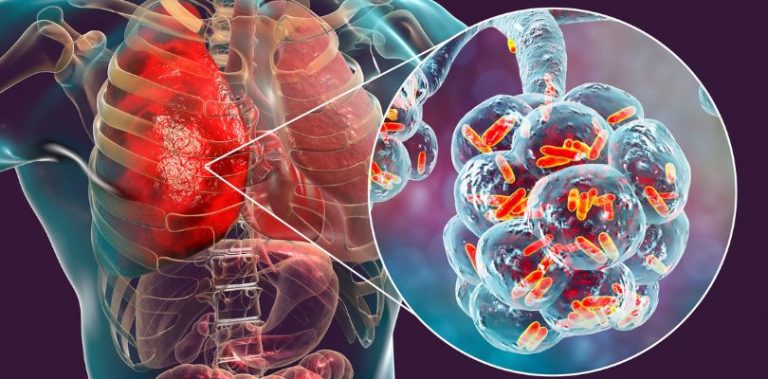Listen to Your Lungs
Lung disease can be a silent threat, often progressing unnoticed until it becomes severe. Recognizing the early signs can save lives by prompting timely medical intervention. In this article, we will explore 10 early signs of lung cancer and discuss various types of lung diseases. We will also look at treatment options available for lung disorders, including Esbriet® (pirfenidone), a prescription medicine used to treat people with a lung disease called idiopathic pulmonary fibrosis (IPF).
10 Early Signs of Lung Cancer
1. New Cough
A persistent cough that does not go away can be an early sign of lung cancer. If you notice a significant change in a chronic cough, or if a new cough develops for no apparent reason, it's essential to seek medical advice.
2. Coughing Up Blood
Medically known as hemoptysis, coughing up blood or rust-colored sputum can signal lung cancer or other serious lung conditions. Even a small amount of blood should be reported to a doctor.
3. Shortness of Breath
Lung cancer can cause fluid to accumulate around the lungs or blockages, which may lead to breathlessness during activities that didn't previously cause it.
4. Chest Pain
Lung cancer can cause pain in the chest, shoulder or back, not associated with coughing. This can be due to a tumor pressing on surrounding tissues or nerves.
5. Hoarse Voice
If cancer affects nerves to the voice box, or if a tumor grows near the vocal cords, it can lead to a change in voice or hoarseness.
6. Losing Weight
Unintentional weight loss of 10 pounds or more may be an early sign of cancer, including lung cancer. This happens when cancer cells use up the body’s energy.
7. Bone Pain
Lung cancer can spread to the bones and may cause bone pain, especially in the back or hips. This pain might worsen at night while resting on the back.
8. Headache
Headaches might occur if lung cancer metastasizes to the brain. However, not all headaches are cancer-related.
9. Wheezing
Wheezing can be a sign of lung cancer or other lung diseases due to inflammation, blockage or compression of airways.
10. Fatigue
Cancer can make you feel persistently tired or weak. It is different from usual fatigue as rest does not relieve it.
Types of Lung Disease
Many types of lung disease cause different issues depending on which part of the lungs is affected. Here are some common lung disorders.
- Idiopathic Pulmonary Fibrosis (IPF): IPF is a chronic condition characterized by the thickening and scarring (fibrosis) of lung tissue. The cause is often unknown, making it “idiopathic." This scarring impedes oxygen from entering the bloodstream, causing symptoms like shortness of breath and chronic cough.
- Asthma: This common lung condition is characterized by inflamed airways that narrow and swell, leading to wheezing, shortness of breath and coughing. Asthma attacks can be triggered by allergens, exercise, cold air and stress.
- Chronic Obstructive Pulmonary Disease (COPD): COPD refers to a group of lung diseases, including emphysema and chronic bronchitis, that block airflow and make breathing difficult. Smoking is the main cause of COPD.
- Pulmonary edema: This is an accumulation of fluid in the lungs, typically caused by heart issues, which makes it difficult to breathe. Immediate medical attention is required.
- Lung cancer: The uncontrolled growth of abnormal cells in one or both lungs, lung cancer, is often due to smoking, though non-smokers can also develop the disease. It's essential to catch lung cancer early for the best chance of successful treatment.
- Pneumonia: An infection that inflames air sacs in one or both lungs, which may fill with fluid or pus, pneumonia can cause symptoms like cough, fever, chills and difficulty breathing.
Treatment Options for Lung Disease
Treatment of lung disease depends on the specific disease and its severity. Here are some standard options.
- Oxygen therapy: For conditions causing low blood oxygen levels, supplemental oxygen can help improve breathlessness and quality of life.
- Pulmonary rehabilitation: This is a program of exercise, education and support to help patients understand their condition and maintain healthy behaviors.
- Thoracentesis: A procedure to drain fluid from around the lungs, providing relief from symptoms like chest pressure and shortness of breath.
- Tracheostomy: This surgery involves creating an opening through the neck into the trachea to provide an airway. Tracheostomies are only done if the lung disorder is severe.
- Lung transplant: In severe cases of lung disease, like advanced COPD or IPF, a lung transplant might be considered when other treatments have failed.
- Bronchodilators: These medications, often used for treating asthma or COPD, relax the muscles around the bronchi, allowing airways to open up and make breathing easier.
- Esbriet® (Pirfenidone): For IPF, Esbriet® can help to slow the progression of the disease by reducing lung scarring and preserving lung function. The way it works is not completely known. However, it has been demonstrated to decrease the production of fibroblasts (cells responsible for producing and releasing proteins) and substances related to the development of fibrous scar tissue during the body's tissue repair process.
Final Notes
Early detection of lung disease is critical for successful treatment and management. If you experience any of the above signs or symptoms, consult your doctor for a thorough evaluation. Timely treatment can significantly improve the quality of life and prognosis for many lung diseases.
